

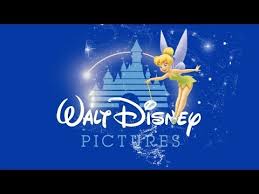



We've all heard of Disney's Magic Kingdom. It's a theme park featuring Cinderella Castle, Disney characters, fireworks and thrilling adventures and rides profiting off the enormous success of Disney movies which were mostly patterned after fairy tales. The two primary sensory inputs human beings operate with in this world are the visual and auditory inputs, seeing and hearing. It is no surprise then that Hollywood movies and television shows, along with the music industry, are the cornerstones of entertainment. And it is also no surprise that Disney has such a powerful influence over our thinking. Disney movies help to promote the romantic idea of Kings and Queens and princes and princesses.
But make no mistake the biggest concept that Disney peddles is magic and the idea that your dreams can come true if only you believe in them. Disney is in the business of selling dreams -- and wishing they will come true in physical reality. Walt Disney said, "You can design and create, and build the most wonderful place in the world. But it takes people to make the dream a reality." He also said, "All our dreams can come true, if we have the courage to pursue them.", "When you're curious, you find lots of interesting things to do.", "Disneyland will never be completed. It will continue to grow as long as there is imagination left in the world.", and "When you're curious, you find lots of interesting things to do." **

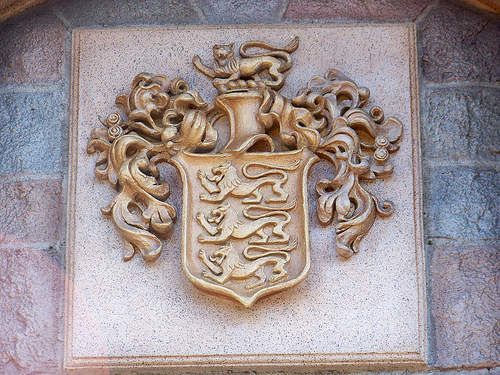
When studying the themes, characters, storylines and the symbolism therein a hidden meaning emerges if one looks close enough. The most obvious place to look for such symbolism is in the Disney introduction that is shown at the beginning of every movie. The intro to every Disney movie today reinforces the programming. The intro begins by showing a star and then panning to a castle in the sky. The new intro can be seen here: https://www.youtube.com/watch?v=vBLXhx9vdHg The new intro began including the castle starting in 1985 with the movie The Black Cauldron. A laser light is shown materializing the castle by etching it in from top to bottom and then a brilliant white light shines through the castle entrance. A stylized "Walt Disney Pictures" text is shown with a 666 hidden in the loops of the cursive writing. Then a smaller light, presumably Tinkerbell, traces a sunrise or dome behind the castle. The emblem on the top flag is the Disney family crest which features lions raising their paws, the one at the top perhaps symbolic of the Demiurge which was symbolized as a serpent with a lion's head. At the very least it may be symbolic of Walt Disney being a master mason since it is well known that Walt Disney was a 33 degree freemason. From Symbolical Masonry, by H.L. Haywood, [1923]: "A few of our Masonic expositors, among whom Albert Pike may be numbered, have seen in the crux ansata the first form of that Lion's Paw by which the Masonic Horus is raised." "THE STRONG GRIP OF THE LION'S PAW. The candidate, representing Hiram Abif, is raised from his make shift grave by the help of the strong grip of a Master Mason, or Lion's Paw." **

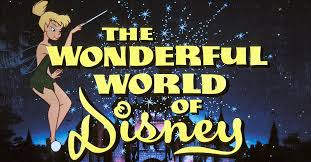
The intros for the television show The Wonderful world of Disney featured a fairy using a magic wand to sprinkle magic pixie dust on the castle. The castle itself is in the shape of a triangle. This is also similar to the traingular mountain domed by stars in the logo of Paramount Pictures. The magic castle is the magic mountain, the entrance to the magic enchanted kingdom. This can be seen in the titles of the Disney movies The Swan Princess: Escape from Castle Mountain and The Swan Princess: The Mystery of the Enchanted Kingdom. At the end of the intro to Teacher's Pet the light is revealed to be an eight-armed gold star. But what does the symbolism of the magic kingdom, the river, fireworks, the star, the fairy, the castle and white light within represent? The answer can be found in the movies themselves and a little bit of research. **
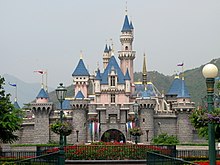
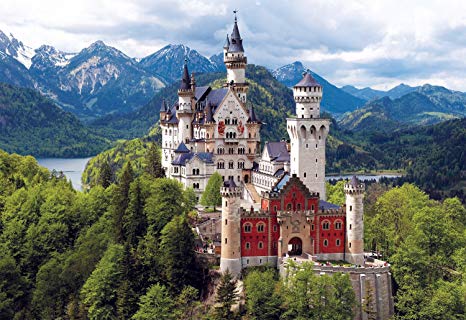
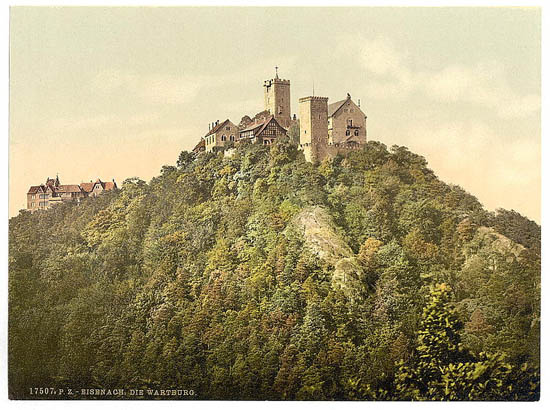
There is the Sleeping Beauty Castle, originally known as Snow White Castle and there is the Cinderella Castle. The Sleeping Beauty Castle’s design in Disneyland was inspired by Neuschwanstein Castle in Bavaria. Neuschwanstein means “New Swan Stone”. The name of the castle derives from the Swan Knight character in the Richard Wagner opera Lohengrin. The fairytale look of the Neuschwanstein castle inspired Walt Disney to create the Magic Kingdom. With over a million people visiting each year Neuschwanstein is the most visited castle in Germany. **
The fact that the castles in Disney Land are modeled after Neuschwanstein Castle is interesting because the Neuschwanstein Castle is also called Venusberg.
Here are various quotes I found online:
"Venusberg, in whose interior, according to legend, dwelt Holda, the Goddess of Spring. In time, Holda became identified with Venus, the pagan Goddess of Love, whose grotto was the home of sirens and nymphs. It was said that the Goddess would lure the Wartburg minnesinger-knights to her lair where her beauty would captivate them." Neuschwanstein was inspired, in part, by the Wartburg. According to Wikipedia, "Venusberg (German; French mont de Venus, 'mountain of Venus') is a motif of European folklore rendered in various legends and epics since the Late Middle Ages. It is a variant of the folktale topos of 'a mortal man seduced by the fairy queen visits the otherworld'. This tale was told in Robert Wagner's famous opera Tannhauser. Venusberg is the magical realm of fairies presided over by the goddess, Venus. **
"Wartburg Castle is on a hill above the town of Eisenach, in the most mythic part of Germany. To the west is the Fairytale Road, associated with the Brothers Grimm, and to the north is the Brocken in the Harz Mountains, where the witches ride on Walpurgisnacht in Goethe’s Faust. Somewhere around here too is the Venusberg, a mountain with a secret underground grotto where, back in medieval times, Venus and her girls used to lure Christian knights from their true path. Instead of keeping their eye on the Virgin Mary or the Holy Grail, they fell into a life of sin."
"The Germanic tribes considered Frau Holda to be the Great Mother Goddess, Leader of the Wild Hunt, and consort of Woden. Her work is to gather souls and to usher them to the otherworld. She is the Patron of Motherhood and childbearing and of the housewife. Frau Holda is reputed to reside around Wells, Sacred Pools, and Springs that were believed to be the portals to the Other world.
Holle is known throughout northern Europe. She is also known as Holda or Hulda. A triple goddess, Holle is the Maiden, the Mother and the Crone–the embodiment of the three stages of womanhood.
As Maiden, she is the ash girl, whose face is half black with soot. Destined to marry Holler, King of Winter and Frost, he tested her with a riddle to be sure of Holle’s worthiness. She had to come to his palace neither naked nor clothed, neither riding nor walking, neither alone nor with companions, in neither light nor darkness. Holle answered by arriving wrapped in a fishing net, sitting on a donkey with one toe dragging on the ground, surrounded by twenty-four wolves at twilight...
Frau Holle, as she is known in Germany, was called The Queen of the Witches. It is quite commonly accepted that Frau Holle is one of the names, given in several areas in Germany to the wife of Wodan (Odin).
Holle’s name is linguistically related to the word Halja, which means “covering”, and is the ancient Teutonic name for Hel, the Norse land of the dead. Holle is called the Queen of the Dead, and resides in the ‘nether’ regions...
Both names also have similarities with Freya's title (Freya means "Lady"), which implicates that certain titles may have been commonly used for gods and goddesses." Indeed, witches refer to the goddess as The Lady.
Holda's connection to the spirit world through the magic of spinning and weaving has associated her with witchcraft in Catholic German folklore. She was considered to ride with witches on distaffs, which closely resemble the brooms that witches are thought to ride. Likewise, Holda was often identified with Diana in old church documents.
The most famous account of Holda was collected by the Brothers Grimm, the fairy tale "Mother Hulda" (German: Frau Holle). Grimm based his theory of Holda on what he took to be the earliest references to her: an eleventh-century interpolation to the Canon Episcopi by Burchard of Worms, and pre-Christian Roman inscriptions to Hludana that he tentatively linked to the same divinity. There were early challenges to connecting this figure with a pagan goddess, since her earliest definite appearance links her with the Virgin Mary, commonly called "Queen of Heaven": an early-13th-century text listing superstitions states that "In the night of Christ's Nativity they set the table for the Queen of Heaven, whom the people call Frau Holda, that she might help them".
Aurore and Aimée is a French literary fairy tale written by Jeanne-Marie Le Prince de Beaumont. Like her better known tale Beauty and the Beast, it is among the first fairy tales deliberately written for children.
The fierce spectacle of the Wild Hunt must have been the most haunting of the dark night raids that Tacitus speaks of in his first century accounts of the Germanic Tribes. No doubt the image of dark raids and savage men dressed in animal skins and tree bark, who rode mighty steeds, must have struck fear in the hearts of those outside of Germanic custom. This imagery was carried over into the early narrations of the Wild Hunt, by Christians who sought to give it a nebula of power and fear. Later the narrations would take on a sinister tone as the age of Christianity dominated the continent. This was a time when Gods and Goddesses became Demons and Witches in league with the Devil, who rode the skies on brooms and gathered souls for Satan’s dark deeds.
Frau Holle, Holda, Hel and Holla. The German word for Hell (Hel, the Norse underworld of the dead) is Holle.
Proto-Germanic: *Erþo ("Earth"), *Frijo ("Wife")
Northern Germanic: Frigg, Frigga, Frija, Hel(?), Hlodyn(?), Jord(?), Saga
Western Germanic: Berchta, Berchte, Berta, Brecht, Erda, Ertha, Frea, Freek, Freke, Frîa, Frick, Fricka, Frija, Fru Gauden, Gwode, Harke, Hel, Hella, Herke, Herta, Hertha, Hludana(?), Holda, Holde, Holl, Holle, Frau Holle, Holla, Hretha(?), Hulda, Nerthus(?), Perahta, Perchta, Urd(?), Urth(?), Waud, Wode, Wolke, Wolle
Anglo-Saxon: Eortha, Erce, Frige
Other names that appear in many legends are Hol, Holle, and Frau Holle, the exact meaning of these names is unknown but there is a connection to German "höhle" and Dutch "hol" (hole, cave, cavern, hollow), trees dedicated to this goddess were often called "hollow trees" and the cavities within these hollow trees were believed to contain children who were waiting for new parents or the goddess herself who spun wool and gave advice to people passing by.
Another name that appears in Frisian legends as well as in Germany and some other places is Hel or Hella, which has a connection to German "Hölle", Dutch "Hel", Scandinavian "Helvete", and English "Hell", which all refer to the Christian Gehenna but was originally a name for the goddess of the afterlife.
One of Holda's titles is "Queen of the Elves",
During the Middle Ages the people in the German empire and the surrounding areas held processions during carnival, in this processions Wodan, Holda, and the Wild Hunt were also depicted; a lady dressed up as Holda rode on a horse and blew a song on a horn: 'Durch Feld und Wald,
Das Horn erschallt.
Frau Holde kommt, hu, hu!
Ihr Schätzlein das bist du!
Through field and wood, the horn sounds.
Lady Holde comes, hoo, hoo!
Her dear one that is you!' She then started lashing her whip and the people sang: 'Trara, trara, frau Holde ist da,
Und kommt ihr das Schätzlein nah,
Das sie mit den Augen ersah
So führt sie ihn mit sich. Trara!
Trara, trara, lady Holde is here,
And if you come closer to this dear one,
That you saw with your eyes
So she will take you with her. Trara!' "

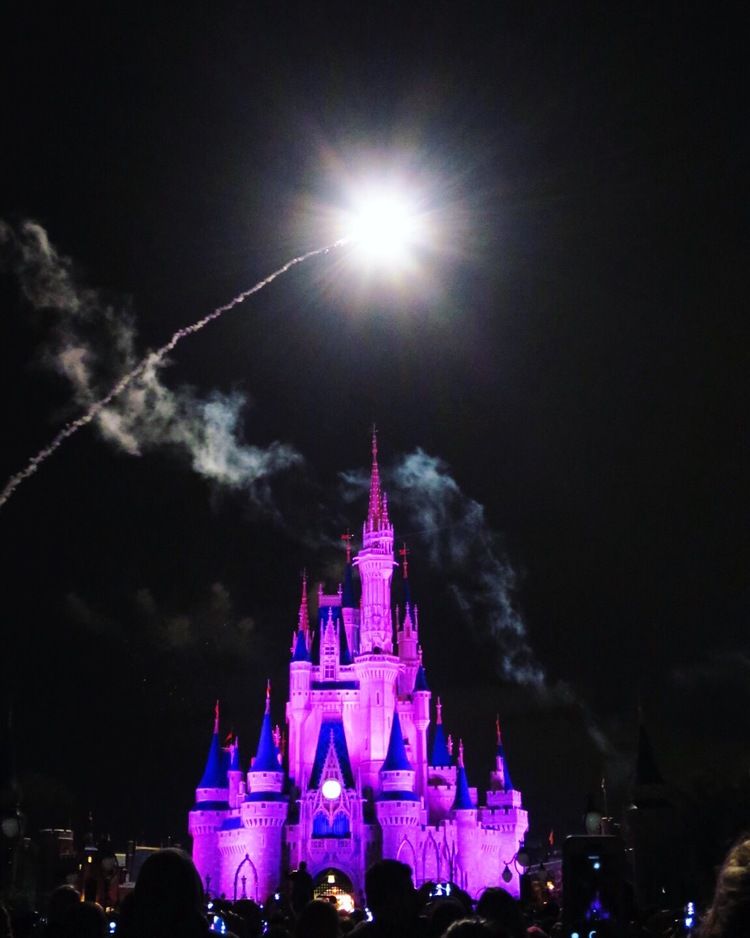
Disney movies suggest the star in the Disney intro is the Evening star, Venus, which is symbolic of the goddess of love, beauty and desire, Venus. The Disney movie Pinocchio posits that "When you wish
upon a star
your dreams
come true" and that "Anything your heart desires
will come to youif your heart
is in your dream". The sculpter Gippetto looks out the window and tells his cat, Figaro: "Oh, Figaro! Look, look!
The wishing star!
Star light, star bright,
first star I see tonight;
I wish I may, I wish I might...
have the wish I make tonight." The first star that is seen in the evening is Venus and it is called the Evening Star. Gipetto wishes that his puppet will become a real boy and in the fairy tale he invokes the goddess Aphrodite aka Venus to make it happen. The blue fairy comes from the star. "Hey, that star again!
Uh, the lady, the-- Ooh!
- The fairy!" They call her "The Lady". In The Little Mermaid, Ariel wishes to become a human so she can be with her Prince, Eric. **
All the current Disney movies now start with an intro of a star shining in the night and zooming out to show a magic castle and a fairy sprinkling magic pixie dust. The star is the same star featured in Peter Pan, the second star to the right. "The second star to the right shines in the night for you to tell you that the dreams you plan really can come true. The second star to the right shines with a light so rare and if it's Never Land you need its light will lead you there." The movie urges us "Each time we say good night" to "thank the little star that shines the second from the right." Peter Pan points the star out to Wendy. "There it is, Wendy. Second star to the right." In the movie The Princess and The Frog, the scond star on the right is revealed to be none other than Venus. The movie begins with a song about the evening star. "The Evening Star is shining bright so make a wish and hold on tight. There's magic in the air tonight." The princess Tiana tells her father, "Charlotte's fairy tale book said if you make a wish on the Evening Star, it's sure to come true." Her father answers, "Well, you wish on that star, sweetheart. Yes, you wish and you dreamwith all your little heart." "Thank you, Evening Star!" They later meet a firefly named Ray who is in love with the Evening Star who he calls Evangeline. When Ray dies he ascends into the night sky and takes his position to the left of the Evening Star, making the Evening Star the second star on the right.
That is what Disney is selling: dreams. They are encouraging us to keep dreaming and to indulge our wishes and desires. So it's no surprise that the star Disney encourages us to wish upon is Venus, the goddess of love, beauty, and desire. They encourage us to keep wishing for and desiring things which can only be attained in the physical world: a young, beautiful princess or rich, handsome, charming Prince who lives in a castle. To keep hoping for a true love with a perfect soul mate. And this love or emotional attachment to the physical plane keeps our Intention on reincarnating into the physical plane. **
The song continues: "No request is too extreme when you wish upon a star as dreamers do. Fate is kind. She brings to those who love the sweet fulfilment of
their secret longing. Like a bolt out of the blue Fate steps in and sees you through. When you wish upon a star your dreams come true." Pinocchio is not the only Disney movie that promotes this fantasy, of course. Snow White, Cinderella and Sleeping Beauty are all essentially derived from the same storied fantasy.
The selling of dreams by Disney started with the very first movie, Snow White, which was based on the animated Disney short The Goddess of Spring. The Goddess of Spring was basically Holda, the goddess of the Underworld or Hell. "Some day my prince will come. Some day we'll meet again. And away to his castle we'll go to be happy forever. Some day when Spring is here we'll find our love anew and the birds will sing and wedding bells will ring some day when my dreams come true." She says she'll touch every star.
"Cinderella remained ever gentle and kind, for with each dawn she found new hope that someday her dreams of happiness would come true." Cinderella dreams of a Prince. " Yes, I know it's a lovely morning, but it was a lovely dream too." "What kind of a dream?" "Uh-uh. Can't tell 'Cause if you tell a wish, it won't come true. And after all..." Cinderella sings, "A dream is a wish your heart makes when you're fast asleep. In dreams, you will lose your heartaches. Whatever you wish for you keep. Have faith in your dreams and someday your rainbow will come smiling through. No matter how your heart is grieving if you keep on believing, the dream that you wish will come true." Cinderella catches her dog dreaming and says, "Dreaming again. Chasing Lucifer?" Cinderella meets her Prince and exclaims, "My heart has wings and I can fly. I'll touch every star in the sky. So this is the miracle that I've been dreaming of. So this is love."
In Sleeping Beauty, Aurora (goddess of the Dawn) sings a recurring song, Once Upon a Dream. "I have met someone. Oh, a prince. Well, he's tall and handsome and so romantic. Oh, we walk together and talk together, and just before we say goodbye, he takes me in his arms and then I wake up. Yes, it's only in my dreams. But they say if you dream a thing more than once, it's sure to come true; and I've seen him so many times." Later she does meet the Prince. "I know you. I walked with you once upon a dream." "I know you. The gleam in your eyes is so familiar a gleam. Yet I know it's true that visions are seldom all they seem. But if I know you, I know what you'll do. You'll love me at once -- the way you did once upon a dream." Another song talks about the Dawn. "Sleeping Beauty fair. Gold of sunshine in your hair. Lips that shame the red, red rose. Dreaming of true love in slumber repose. One day he will come riding out of the dawn and you'll awaken to love's first kiss." "Off he rides on his noble steed, a valiant figure, straight and tall to wake his love with love's first kiss and prove that true love conquers all!"
Disney keeps our Earthly dreams rekindled and this perpetuates our constant desire and intention to keep reincarnating. The dreams are unrealistic and not really achievable for the vast majority. I mean, as a male you have to be born into a royal family to be a Prince. And, of course, only a handful of females will ever become a princess. These unrealistic expectations result in a sense of entitlement, disappointment and an eventual settling for Mr. Right Now instead of a Prince Charming or Mr. Right.
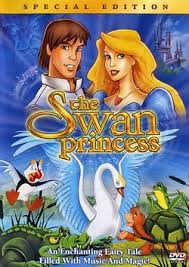
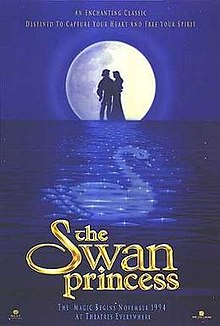
Cinderella's Castle at Disney World and Sleeping Beauty's Castle in Disney Land are modeled after Bavaria's Neuschwanstein Castle.
The Disney castles were modeled after the castle of King Ludwig which was a monument to castle in the operas of Richard Wagner, especially the one in his operas Lohengrin and Tannhauser which were based on mythology surrounding knights and the Holy Grail. Walt Disney was fascinated by the legend of King Arthur and even produced a movie, The Sword in the Stone. This is just speculation on my part, but the Holy Grail could be the pineal gland which is shaped like a cup or pine cone and contains the sacred fluids or pools of DMT. The wishing well may be symbolic of the gravity well and the ability to instantly manifest wishes into reality. The ring may be the ring of rays of emanating from the region of the constellation of Cygnus, the Swan, or a similar region of space. The sword in the stone may represent a light stream emanating through the black hole. To remove the sword from the dense stone is to withdraw our Spirit from incarnating into the dense frequencies of physical reality. When the sword of light (Spirit) is placed into the dense stone, it becomes the Spear of Destiny which effectively "kills" the Spirit by placing it into a soul.
The Disney Magic Kingdom is the representation of the magic realm of the Fairy Queen and the fairies in the afterlife. The Fairy Queen was the goddess known in various cultures by a variety of names: Holda, Brigid, Freya, Venus (the evening star), Ishtar, Isis, and Mary. The fair maiden princesses in the Disney movies were modeled after this goddess. **
The Wagner opera Lohengrin is about Lohengrin, the Swan Knight, a knight of the Holy Grail. He comes in a boat drawn by swans to rescue a maiden.
In a letter to Richard Wagner, May 1868, Ludwig II wrote,
"It is my intention to rebuild the old castle ruin of Hohenschwangau near the Pöllat Gorge in the authentic style of the old German knights' castles, and I must confess to you that I am looking forward very much to living there one day [...]; you know the revered guest I would like to accommodate there; the location is one of the most beautiful to be found, holy and unapproachable, a worthy temple for the divine friend who has brought salvation and true blessing to the world. It will also remind you of "Tannhäuser" (Singers' Hall with a view of the castle in the background), "Lohengrin'" (castle courtyard, open corridor, path to the chapel)..." **
"The opera has inspired other works of art. King Ludwig II of Bavaria named his fairy-tale castle Neuschwanstein (New Swan Castle), after the Swan Knight. It was King Ludwig's patronage that later gave Wagner the means and opportunity to compose, build a theatre for, and stage his epic cycle The Ring of the Nibelung.
The most popular and recognizable part of the opera is the Bridal Chorus, better known as "Here Comes the Bride", often played as a processional at weddings in the West." The Bride is another name for Brigid/Brigit/Brig, the Celtic goddess of the sun and moon, goddess of the well and the flame.
These screenshots are from the 1972 performance of the opera, Lohengrin.
"Behold! Behold! What strange and wondrous thing is this! A swan is pulling a barque towards us! A knight is standing upright in it! How his armour shines!" "We thank you, Lord our God, for protecting this weak woman!"
"Do you come to us as one sent by God?" Lhengrin answers, "To stand in combat for a maiden accused of a great crime is why l have been sent."
Lohengrin speaks of the mystery of the grail. "There is a castle by the name of Montsalvat; a light-filled temple stands within it, more beautiful than anything on earth; therein is a vessel of wondrous blessing that is watched over as a sacred relic: that the purest of men might guard it, brought down by a host of angels; every year a dove descends from heaven to fortify its wondrous power: it is called the Grail, and the purest, most blessed faith is imparted through it to the brotherhood of knights... I was sent to you by the Grail: my father Parzival wears its crown, I its knight am called Lohengrin."
An article on the background of Tannhauser. "Eisenach, Germany, in the early 13th century. The Landgraves of the Thuringian Valley ruled the area of Germany around the Wartburg. They were great patrons of the arts, and particularly music and poetry, holding contests between the minnesingers at the Wartburg. Across the valley towered the Venusberg, in whose interior, according to legend, dwelt Holda, the Goddess of Spring. In time, Holda became identified with Venus, the pagan Goddess of Love, whose grotto was the home of sirens and nymphs. It was said that the Goddess would lure the Wartburg minnesinger-knights to her lair where her beauty would captivate them. The minnesinger-knight Heinrich von Ofterdingen, known as Tannhäuser, left the court of the Landgrave of Thuringia a year ago after a disagreement with his fellow knights. Since then he has been held as a willing captive through his love for Venus, in her grotto in the Venusberg."
"Der Ring des Nibelungen (The Ring of the Nibelung), WWV 86, is a cycle of four German-language epic music dramas composed by Richard Wagner. The works are based loosely on characters from the Norse sagas and the Nibelungenlied. The composer termed the cycle a "Bühnenfestspiel" (stage festival play), structured in three days preceded by a Vorabend ("preliminary evening"). It is often referred to as the Ring Cycle, Wagner's Ring, or simply The Ring. The four parts that constitute the Ring cycle are, Das Rheingold (The Rhinegold); Die Walküre (The Valkyrie); Siegfried; and Götterdämmerung (Twilight of the Gods).
The plot revolves around a magic ring that grants the power to rule the world. Wotan (Woden/Odin), King of the Gods (god of light, air, and wind) steals the ring. Fricka (Freya/Venus), Wotan's wife, goddess of marriage."
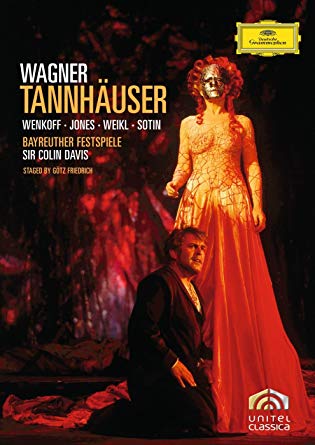
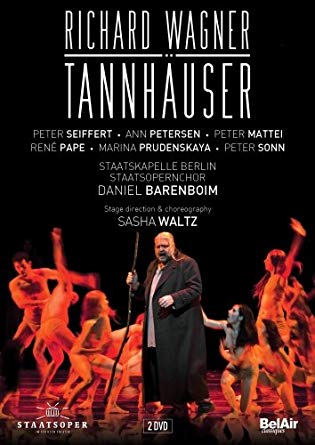
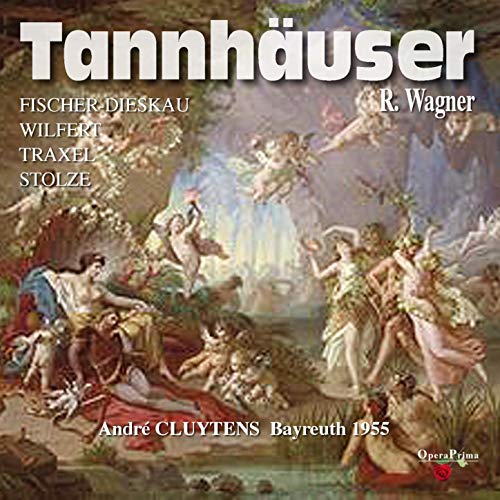
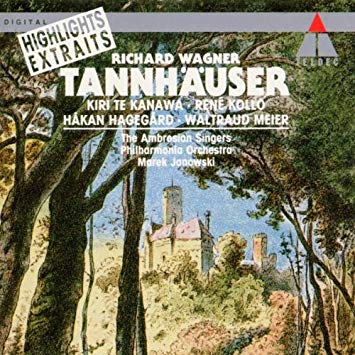
Here is a photo from a performance of the opera in Munich. Notice they are shooting arrows at the moon which is watching them. Venus is a moon goddess.
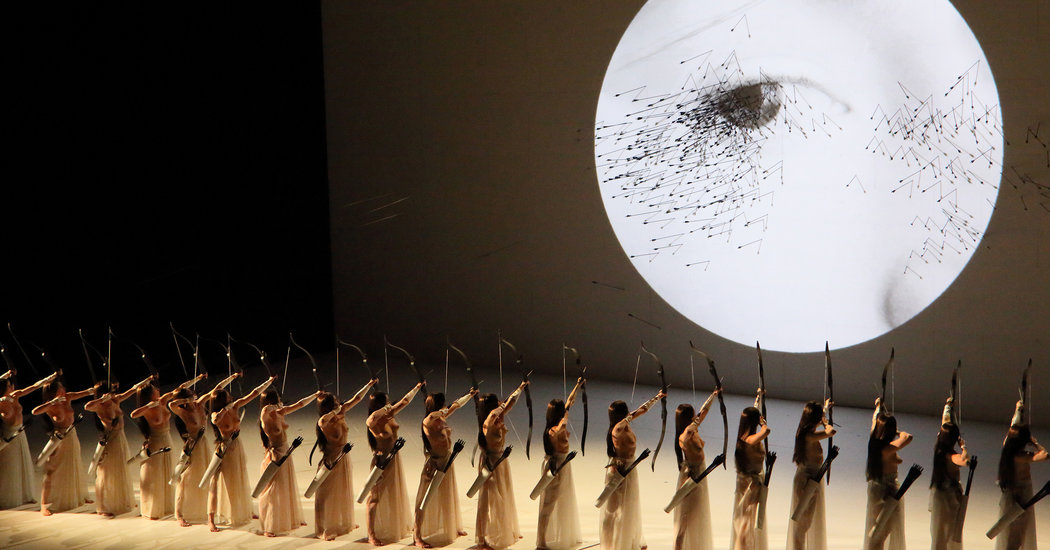
The opera Tannhauser so accurately depicts the dilemma for the Spirit once its soul has let go of its physical body at death. The rapturous love that Tannhauser feels for the goddess of love causes him to feel like a prisoner and eventually he longs for suffering again so he can feel the breeze and hear songbirds again so he leaves the Venusberg to return to the world again. The screenshots are from the 1978 TV movie performance of the opera. **
Act One of the opera is named The Venusberg. Perhaps the highlight of the opera is when Wolfram sings the aria, Song to the Evening Star. Wolfram sings O du Mein Holder Abendstern. The title of this aria translates to " Oh, My Gracious Evening Star":
English Translation: "Like a premonition of death, darkness covers the land, and envelops the valley in its sombre shroud; the soul that longs for the highest grounds, is fearful of the darkness before it takes flight. There you are, oh loveliest star, your soft light you send into the distance; your beam pierces the gloomy shroud and you show the way out of the valley. Oh, my gracious evening star, I always greet you like happily: with my heart that she never betrayed take to her as she drifts past you, when she soars from this earthly vale, to transform into blessed angel!"
The libretto describes scene one as "The stage represents the interior of the Venusberg" with the principal characters being "Sirens, Venus, Tannhäuser, Nymphs, Bacchantes, Amorous couples". Notice the silver mask that Venus wears. **
The opera opens with a depiction of the Venusberg. Nymphs, amorous couples and sirens accompany Venus. The sirens implore Tannhauser to come ashore: "Come to this shore! Come to the land where in glowing Love's fond embrace blessed balm shall soothe your longings!"
In the presence of the goddess of love all sense of time is lost and Tannhauser sings, "In a dream it was as if I heard what long has been unfamiliar to my ear... I cannot measure the time that I have tarried here. Days, months, exist no more for me." Venus asks him, "Are you so soon weary of the sweet wonders which my love has lavished on you? Or can it be you so regret being a god? Have you so soon forgotten how once you suffered, while now you live here lapped in delights?... Extol love, which you lauded with such rapture that you won for yourself the goddess of love!" **
TANNHÄUSER: "Let your praises resound! Glorified be the wonders your might has wrought for my bliss! Let my song in loud and joyful tones extol the sweet delights flowing from your bounty! My heart yearned, my soul thirsted for joy, ah! for divine pleasure: what once you showed only to gods your favour has bestowed upon a mortal. But alas! I have remained mortal, and your love overwhelms me. Though a god can savour joy for ever, I am subject to change; I have at heart not pleasure alone, and in my joy long for suffering. From your kingdom I must flee; O queen, o goddess, set me free!"
TANNHÄUSER: "Gratitude for your favour and praise for your love! Forever blessed is he who has dwelt here! Forever envied is he who, hot with desire, has in your arms shared the divine glow! The wonders of your realm cast a spell, here I breathe the magic of unalloyed bliss; no land in the wide world offers the like; all it holds seems in comparison of little worth. Yet from these rosy scents I long for the woodland breezes, for the clear blue of out sky, for the fresh green of out meadows, for the sweet song of out birds, for the dear sound of out bells. From your kingdom I must flee; O queen, o goddess, set me free!" **
VENUS: "Faithless one! Alas, what is this I hear? You dare to spurn my love? You praise it but seek from it to fly? Has my allure grown wearisome?" TANNHÄUSER: "Ah fair goddess! Do not be angry with me! It is your unbounded allure from which I fly!"
VENUS: "...A feast of joy shall spring from our union; let us gladly celebrate the rite of love! No timid offering shall you dedicate to it, no! revel in union with love's own goddess!"
TANNHÄUSER: "with you I can only be a slave: for freedom I am consumed with longing, for freedom I thirst; to strife and struggle will I go, even though it be to downfall and death! So from your kingdom I must flee; O queen, o goddess, set me free!" **
VENUS: "Then go, madman, go! Traitor, see, I am not holding you! I set you free! Away! What you desire shall be your doom! Fly to the cold world of men, from whose feeble, cheerless fancies we gods of joy fled"
SHEPHERD: "Dame Holda came forth from the hill to roam through fields arid meadows: surpassing sweet sounds reached my ear, my eyes craved to see her. There I dreamed many a fair dream, and scarcely had I opened my eyes than the sun was shining warm, and May had come. Now I merrily play my pipe, for May is here, lovely May!"
Notice how similar the following back and forth bantering dialogue of Tannhauser pleading to be let is to the operatic part of Queen's epic song, Bohemian Rhapsody. I imagine Freddie Mercury was heavily influenced by the operas The Magic Flute and Lohengrin. TANNHÄUSER: "I wandered in far, far distant lands, where repose or rest I never found. Do not ask! I came not here to contend with you. Let us make peace, and let me go my way!" LANDGRAVE: "Not yet! You are one of us again." WALTER: "You must not go." BITEROLF: "We will not let you go." WALTER, HEINRICH, WOLFRAM, REINMAR, LANDGRAVE: "Stay with us!" TANNHÄUSER: "Let me go! To linger is of no avail, and never can I rest in peace. My way urges me to hasten only onwards, and never may I look back." LANDGRAVE AND MINSTRFLS: "O stay! You must remain with us; we will not let you go again. Having sought us out, why hurry away after so brief a reunion?" TANNHÄUSER: "I must away from here!" LANDGRAVE, WALTER, HEINRICH, BITEROLF, REINMAR: "Stay, o stay with us!" WOLFRAM: "Stay for Elisabeth!" **
WOLFRAM: "When you contended with us for the palm in singing, sometimes you were victorious over our songs, sometimes you suffered defeat through our art: one prize there was which you alone won. Was it magic, was it a divine power, by which you wrought such a miracle, enchanting that maid of matchless virtue by your song of joy and sorrow? But ah! when in your pride you left us, she closed her heart against our song; we saw her cheeks grow pale, and she henceforth avoided our company. O come back, valiant minstrel, and do not deprive us of your song. Let her no longer be absent from our festivals, and may her star shine on us once more!"
"As I look around on this noble assembly, what a glorious sight makes my heart glow! So many heroes, valiant, upright and wise, like a proud oakwood, splendid, fresh and green; and I see ladies lovely and virtuous, a fair garland of most fragrant flowers. My gaze is dazzled by this display, my song is silenced before such beauteous lustre. Then I raise my eyes to one single star up in the heavens which shines on me: my spirit is comforted by that distant radiance and my soul devoutly sinks in prayer. And lo! I behold a fountain of delights on which my spirit gazes, filled with wonder: from it there flows blissful joy by which my heart is inexpressibly refreshed. O never may I sully that fountain or cloud its limpid waters with impure thoughts! In devotion I would sacrifice myself and gladly shed the last drop of my heart's blood. You nobles may gather from these words how I regard the purest essence of love."
WOLFRAM: "O heaven, let me now implore thee,
grant my song divine approval!
Let me see sin banished
from this noble, pure assembly!
Let my song resound
inspired by thee, sacred love,
that pierced my very soul
in angelic beauty!
Thou didst come from heaven,
I follow from afar;
so guide me to that land
where thy star shines for ever."
TANNHÄUSER: "To you, goddess of love, shall my song be raised!
Loudly let me now sing your praise!
Your sweet charms are the source of all beauty,
and every fair wonder springs from you.
Only he who has known
your ardent embrace knows what love is;
poor wretches who have never tasted love,
away! hasten to the hill of Venus!"
ALL: "Oh, he is wicked! Fly from him!
Hark, he was in the Venusberg!"
LANDGRAVE, MINSTRELS AND KNIGHTS: "You heard it! His sinful lips
have confessed his fearful crime. He has shared the joys of Hell,
he has dwelt within the Venusberg!
Abominable! Monstrous! Damnable!
Steep your swords in his blood!
Let him be condemned and banished
and sent back to the bottomless pit of Hell!"
LANDGRAVE, KNIGHTS AND MINSTRELS: "An angel has descended from the realms of light to bring us God's holy message. Look up, vile traitor, and realise your sin! You gave her death, she begs for your life; who could hear an angel's plea unmoved? Though I may not forgive the sinner, I cannot oppose Heaven's word."
Wolfram Sings O du Mein Holder Abendstern. The title of this aria translates to " Oh, My Gracious Evening Star":
"Like a portent of death, twilight shrouds the earth
and envelops the valley in its sable robe; the soul, that yearns for those heights,
dreads to take its dark and awful flight.
There you shine, o fairest of the stars,
and shed your gentle light from afar;
your friendly beam penetrates the twilight gloom
and points the way out from the valley."
"O my fair evening star, I always gladly greeted thee: from a heart that never betrayed its faith greet her when she passes, when she soars above this mortal vale to become a blessed angel in heaven!"
TANNHÄUSER: "And he to whom I prayed replied: "If you have felt such sinful desires and warmed yourself at Hell's fires, if you have dwelt within the Venusberg, you are forever accursed! As this staff in my hand will nevermore put forth a living leaf, so from the burning brand of Hell salvation never will bloom for you! Then I sank down, crushed and in despair, my senses left me. When I awoke, night had fallen on the empty square, but from afar sounded joyful hymns of praise. The sweet songs sickened me: from the lying sounds of promise which pierced my soul with icy chill, horror drove me forth in wild flight. It drove me here, where once I so enjoyed bliss and pleasure on her warm breast! To you, fair Venus, I return, to the sweet darkness of your spell; I will come down to your court, where your charms now shall ever smile on me!"
TANNHÄUSER: "And do you not breathe sweet fragrance? Do you not hear rapturous voices?"
WOLFRAM: "My heart trembles with wild dread."
TANNHÄUSER: "That is the dancing host of nymphs! Come on! Come on to bliss and joy!"
WOLFRAM: "Alas! Black magic is abroad! Hell's wild course draws near."
TANNHÄUSER: "Rapture surges through my senses as this roseate glow I see; this is the magic realm of love. Let us away to the Venusberg!
VENUS: "Welcome, fickle man!
Did earth reject and banish you?
And do you nowhere find compassion,
and seek for love in my arms?
TANNHÄUSER: "O Venus, generous of mercy!
To you, to you I am driven!"
TANNHÄUSER: "All hope of salvation is lost to me;
now let me choose the delights of Hell!"
TANNHÄUSER: "Holy Elisabeth, pray for me!"
Tannhauser dies.
PILGRIMS; "carrying in their midst a priest's staff covered in fresh, green leaves Hail! Hail! Hail to this miracle of grace! Salvation to the world is given. In this holy hour of night the Lord hath manifested himself through a miracle. The barren staff in the priest's hand he has decked with fresh green: so to the sinner in Hell's flames shall redemption bloom anew! Proclaim it through every land that through this miracle he found grace! God reigns high above the whole world, and his compassion is never sought in vain! Halleluja! Halleluja! Halleluja!
LANDGRAVE, MINSTRELs, KNIGHTS AND PILGRIMS: "The grace of God is granted to the penitent; now he enters into the bliss of heaven!"
===========================
"Venusberg (German; French mont de Venus, "mountain of Venus") is a motif of European folklore rendered in various legends and epics since the Late Middle Ages. It is a variant of the folktale topos of "a mortal man seduced by the fairy queen visits the otherworld" (as in Thomas the Rhymer). In German folklore of the 16th century, the narrative becomes associated with the minnesinger Tannhäuser.
Venusberg as a name of the otherworld or fairyland is first mentioned in German in Formicarius by Johannes Nider (1437/38) in the context of the rising interest in witchcraft at the time.
The earliest version of the narrative of the legend, a knight seeking forgiveness for having adored a pagan goddess in an enchanted mountain being rejected by the pope and returning to the mountain, even though a miracle prompts the pope to send emissaries after him to call him back, is first recorded in the form of a ballad by the Provencal writer Antoine de la Sale, part of the compilation known as La Salade (c. 1440). In this version, likely based on an Italian original, the "queen of the fairies" is named Sibylla rather than Venus, and there is no association with Tannhäuser."
"Wartburg Castle, shown below in an image from the 1890’s, is on a hill above the town of Eisenach, in the most mythic part of Germany. To the west is the Fairytale Road, associated with the Brothers Grimm, and to the north is the Brocken in the Harz Mountains, where the witches ride on Walpurgisnacht in Goethe’s Faust. Somewhere around here too is the Venusberg, a mountain with a secret underground grotto where, back in medieval times, Venus and her girls used to lure Christian knights from their true path. Instead of keeping their eye on the Virgin Mary or the Holy Grail, they fell into a life of sin."
The Disney connection is Cinderella's Castle, the fairytale trademark that was modelled on Neuschwanstein, the German King Ludwig's monument to Wagner and his music
This fairytale look of the Neuschwanstein castle inspired Walt Disney to create the Magic Kingdom. Today, Neuschwanstein is the most visited castle in Germany, and one of the most popular tourist destination in the world. Every year over 1.300.000 people cross its gate.
Neuschwanstein means “New Swan Stone”. The name of the castle derives from one of Wagner’s opera’s character, the Swan Knight.
The Neuschwanstein castle was built for King Ludwig II.
Wartburg Castle was founded in 1067, and its central structure dates back to the 12th Century. By comparison, Neuschwanstein in Bavaria--which was inspired, in part, by the Wartburg--is a modern fairy-tale confection from the late 1800s.
The Sleeping Beauty Castle’s design in Disneyland was inspired by Neuschwanstein Castle.
""At a later time, the German poet Wolfram von Eschenbach incorporated the swan knight Loherangrin into his Arthurian epic Parzival(first quarter of the 13th century). A German text, written by Konrad von Würzburg in 1257, also featured a Swan Knight without a name. Wolfram's and Konrad's were used to construct the libretto for Richard Wagner's opera Lohengrin (Weimar 1850)."
Lohengrin...
The opera has inspired other works of art. King Ludwig II of Bavaria named his fairy-tale castle Neuschwanstein (New Swan Castle), after the Swan Knight. It was King Ludwig's patronage that later gave Wagner the means and opportunity to compose, build a theatre for, and stage his epic cycle The Ring of the Nibelung.
The most popular and recognizable part of the opera is the Bridal Chorus, better known as "Here Comes the Bride", often played as a processional at weddings in the West"
"When Elsa appears on the balcony before dawn, she hears Ortrud lamenting and pities her. As Elsa descends to open the castle door, Ortrud prays to her pagan gods, Wodan and Freia, for malice, guile, and cunning, in order to deceive Elsa and restore pagan rule to the region. Ortrud warns Elsa that since she knows nothing about her rescuer, he could leave at any time as suddenly as he came, but Elsa is sure of the Knight's virtues. The two women go into the castle. Left alone outside, Telramund vows to bring about the Knight's downfall."
"A dove descends from heaven and, taking the place of the swan at the head of the boat, leads Lohengrin to the castle of the Holy Grail. Elsa is stricken with grief and falls to the ground dead."
"Sleeping Beauty Castle at night with King Arthur’s Carrousel visible through the Castle archway."
"Walt was fascinated by Arthurian legend ever since he was a boy. His love of the legend of King Arthur and the Knights of the Round Table is on full display in Fantasyland. Not only is the merry-go-round in Fantasyland called King Arthur’s Carrousel, but Walt had originally planned that the Disneyland castle would be King Arthur’s Castle or the Medieval Castle. The decision to theme the castle as a tie-in to the motion picture Sleeping Beautycame after construction of the castle had begun. Walt also produced an animated film based on Arthurian legend, The Sword in the Stone (1963)."
"The Swan Knight’s real home was always said to be a mountain where Venus, the goddess, lived or was present in the Grail. To some this was Montsegur, the last bastion of defense for the Cathars, the pure ones, who were the victims of the Church’s persecution and slaughter. Montsegur is alternatively dedicated to Belissena, the Astarte-Artemis-Diana type goddess of the Celtic-Iberians. This goddess of various names had priestesses who were called doves. The dove would be the emblem employed by the Cathars in the thirteenth century and the Huguenots (French Protestants) of later centuries."
"While the legends that grew around Godfroi are celebrated, the true story is just as interesting. He was not, as some legends declared, descended from Dagobert thus entitling him to claim the Merovingian bloodline. Instead, he descended from Pepin of Heristal, Charlemagne’s grandfather, which did earn him a place in the Merovingian bloodline. The thesis of Holy Blood, Holy Grail is that the Merovingian bloodline actually could be traced back to the Biblical David, through Jesus."
"The mother of Jesus, Mary, was said to have been a virgin at the time she conceived Jesus. Similarly Merovech or Merovee, a word that combines the Latin words for “mother” and “sea,” was a king born miraculously. Merovee was the progenitor of the Merovingians. The Swan Knight has an equally mysterious origin."
The mother of Jesus, Mary, was said to have been a virgin at the time she conceived Jesus. Similarly Merovech or Merovee, a word that combines the Latin words for “mother” and “sea,” was a king born miraculously. Merovee was the progenitor of the Merovingians. The Swan Knight has an equally mysterious origin.
"While the story of the Knight of the Swan might end after the fall of Jerusalem and Acre, as well as the subsequent suppression of the Templars, it doesn’t. One of the cultures Templars were influenced by was the Mandaeans. This group worshipped St. John the Baptist as the true god on Earth. The Templars worshipped St. John as well, making him their patron saint and his feast day the most celebrated of the year. The Mandaeans believed that once the soul left the body, it needed to pass through the North Star to return home. The North Star to them was Deneb in the Swan Constellation."
"In most accounts Zeus forced himself on Leda as a swan, and she laid an egg from which Helen was hatched. The word “Lada” is the Lycian (or Cretan) word for woman. If we strip this myth down, it may mean the cosmic father, coupled with “Woman,” and she in turn bore the egg that started human life.
In Greek myth Helen was not simply the woman whom Paris abducted. She was the mother or moon goddess who gave the early Greeks her names (Hellenes). In various dialects she was Hel, Helga, Ella, Holle and Holde. Barbara Walker writes that her name was shared in central Europe where Holland, Helsinki, Heligoland and Holstein were all named for this often-dark aspect of the goddess."
"While the daughter Hel(en) was the dark side, mother Leda was her opposite. In Italy, Leda was Lat and Latona. She was the eponymous mother of the Latium people. She was from the Milky Way, a universal source of nourishment. She laid the Golden Egg or the World Egg making her mother to the Earth and Sun. In Italy Latte became the word for milk. The Arabs in a pre-Mohammed age had three goddesses as well and she was worshipped as Al-Lat. Further east Krishna was the Swan Knight who courted the milk maidens."
Castle represents venusberg magic kingdom magic castle magic mountain
Swan maidens, knights, goddesses psychopomps, isis, brigid, mary, cygnus, cycnus etc...
Cygnus
Stork or swan....stork (Mother Goose) brings new baby soul into the world and we sing a swan song at death.....it lays the world egg in the World Tree. The Seprent of teptation comes on the World Tree, the knowledge of good and evil (Duality), and wraps itself around the egg. Quetzalcoatl is a firebird said to resurrect itself from the ashes to be born again.
'In 1729, an English translation appeared of Perrault's collection, Robert Samber's Histories or Tales of Past Times, Told by Mother Goose,[16] which introduced Sleeping Beauty, Little Red Riding Hood, Puss in Boots, Cinderella, and other Perrault tales to English-speaking audiences."
Milky way river of souls, Thames isis
Black hole fireworks spear holy grail cup
Blazer blazing star
"
The constellation Virgo is often said to personify Persephone, the daughter of Demeter, the harvest goddess. According to the famous Greek myth, eternal spring once reigned upon the Earth, until that fateful day when the god of the underworld abducted Persephone, the radiant maiden of spring." **
"In the 1979 Disney film The Black Hole, the protagonists discover a black hole with a mysterious space vessel orbiting just beyond the event horizon; the name of the vessel is the 'Cygnus'."
"An older image of the sleeping princess: Brünnhilde, surrounded by magical fire rather than roses (illustration by Arthur Rackham to Richard Wagner's Die Walküre)"
"In the Norse tradition, Brunhild is a shieldmaiden or valkyrie, who appears as a main character in the Völsunga saga and some Eddic poems treating the same events. In the continental Germanic tradition, where she is a central character in the Nibelungenlied, she is a powerful Amazon-like queen. In both traditions, she is instrumental in bringing about the death of the hero Sigurd or Siegfried after he deceives her into marrying the Burgundian king Gunther or Gunnar. In both traditions, the immediate cause for her desire to have Sigurd murdered is a quarrel with the hero's wife, Gudrun/Kriemhild. In the Scandinavian tradition, but not in the continental tradition, Brunhild kills herself after Sigurd's death.
Richard Wagner made Brunhild (as Brünnhilde) an important character in his opera cycle Der Ring des Nibelungen. The majority of modern conceptions of the figure have been inspired or influenced by Wagner's depiction.
Brunhild has been called "the paramount figure of Germanic legend."[1] The Nibelungenlied introduces her by saying:
Ez was ein küneginne gesezzen über sê.
ir gelîche enheine man wesse ninder mê.
diu was unmâzen schoene. vil michel was ir kraft.
si schôz mit snellen degenen umbe minne den schaft.[2]
There was a queen who resided over the sea,
Whose like no one knew of anywhere.
She was exceedingly beautiful and great in physical strength.
She shot the shaft with bold knights — love was the prize"
============================
Wagner, the ring
"The plot revolves around a magic ring that grants the power to rule the world, forged by the Nibelung dwarf Alberich from gold he stole from the Rhine maidens in the river Rhine. The Ring itself as described by Wagner is a Rune-magic taufr ("tine", or "talisman") intended to rule the feminine multiplicative power by a fearful magical act termed as 'denial of love' ("Liebesverzicht"). With the assistance of the god Loge, Wotan – the chief of the gods – steals the ring from Alberich, but is forced to hand it over to the giants, Fafner and Fasolt in payment for building the home of the gods, Valhalla, or they will take Freia, who provides the gods with the golden apples that keep them young. Wotan's schemes to regain the ring, spanning generations, drive much of the action in the story. His grandson, the mortal Siegfried, wins the ring by slaying Fafner (who slew Fasolt for the ring) – as Wotan intended – but is eventually betrayed and slain as a result of the intrigues of Alberich's son Hagen, who wants the ring for himself. Finally, the Valkyrie Brünnhilde – Siegfried's lover and Wotan's daughter who lost her immortality for defying her father in an attempt to save Siegfried's father Sigmund – returns the ring to the Rhine maidens as she commits suicide on Siegfried's funeral pyre. Hagen is drowned as he attempts to recover the ring. In the process, the gods and Valhalla are destroyed."
The Valkerie
"Youngest of all the battle-maidens was Brynhild. Nevertheless, to her Odin All-Father had shown more of the Runes of Wisdom than he had shown to any of her sisters. And when the time came for Brynhild to journey down into Midgard he gave her a swan-feather dress such as he had given before to the three Valkyrie sisters--Alvit, Olrun, and Hladgrun.
In the dazzling plumage of a swan the young battle-maiden flew down from Asgard. Not yet had she to go to the battlefields. Waters drew her, and as she waited on the will of the All-Father she sought out a lake that had golden sands for its shore, and as a maiden bathed in it.
Now there dwelt near this lake a young hero whose name was Agnar. And one day as Agnar lay by the lake he saw a swan with dazzling plumage fly down to it. And while she was in the reeds the swan-feather dress slipped off her, and Agnar beheld the swan change to a maiden."
"At the same time, he had discovered Jacob Grimm's Deutsche Mythologie, and had gone on to study the German epics, the Scandinavian eddas, and many other volumes of Nordic mythology. The medieval poet Wolfram von Eschenbach, whom Wagner had already immortalized as a character in his opera Tannhäuser, became one of the composer's favorite writers. Based on his reading of Wolfram von Eschenbach's Parzival, he wrote prose sketches to two operas that he would eventually complete, Lohengrin and Parsifal. He decided to set Lohengrin to music first, a task that he began on April of 1846. On April 28, 1848 Wagner completed the composition of Lohengrin. He then went on to write the libretto to a work that at first he called Siegfrieds Tod (Siegfried's Death) and that much later would become Götterdämmerung."
======================
"Song to the Evening Star" ("O du mein holder Abendstern") is an aria sung by the character Wolfram (baritone) in the third act of Richard Wagner's 1845 opera Tannhäuser."
Full text of Mother Goose:
"OLD MOTHER GOOSE And the Golden Egg.
Old Mother Goose, When she wanted to wander.
Would ride through the air, On a very fine gander. OLD MOTHER GOOSE. The Jew and the Squire
Came behind his back, And began to belabour
The sides of poor Jack. Then old Mother Goose,
That instant came in, And turned her son Jack
Into fam'd Harlequin.
OLD MOTHER GOOSE.
She sent him to market,
A live goose he bought. Here, mother, says he,
It will not go for naught. Jack's goose and her gander, Crew very fond,
They'd both eat together Or swim in one pond.
OLD MGTUER GOOSE.
Mother Goose had a house
'Twas built in a wood, Where an owl at the door
For a sentinel stood. Thk is her son Jack,
A plain looking lad 3 He's not very good,
Nor yet very bad
OLD MOTHER GOOSE.
She then with her wand, VTouch'd the lady so fine, And turned her at once Into sweet Columbine. The gold egg into the sea Was thrown then, When an odd fish brought Him the egg back again,
vacouo 'A All 1011 quo
OLD MOTHER GOOSE.
Jack found one morning, As I have been told, His goose had laid him An egg of pure gold. Jack run to his mother, The news for to tell, She called him a good bov, And said it was well.
OLD MOTHER GOOSE.
Jack sold his gold egg,
To a rogue of a Jew, Who cheated him out of
The half of his due. Then Jack went a courting, A lady so gay,
As fair as the lilv, As sweet as the May.
OLD MOTHER GOOSE.
The law got the goose, Which he vow ? d he would kill, Resolving at once His pockets to fill. Jack's mother came in, A rid , caught the goose soon, And mounting its back Flew up to the moon. "
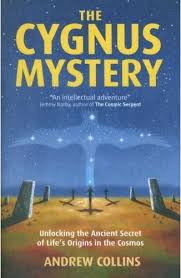
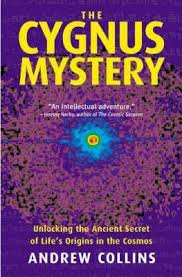
Researcher Andrew Collins has written an interesting book about the Cygnus constellation called The Cygnus Mystery. In it he presents a significant amount of data that suggest the ancients built many of their sacred stone sites in alignment with the constellation of Cygnus. This includes the three pyramids at Giza, Neolithic funerary and ceremonial monuments throughout ancient Wessex, the territory of Stonehenge and Avebury as well as other sacred sites. He also references cave drawings and other relics. He even touches upon mythology, religions and legendary tales. The book contains some interesting chapters such as Goddess of the Swan, The Waters of Life, Swan Knights and Swan Maidens, The Well of Souls, The Swan-Goose of Eternity, The Point of Creation, Cosmic Swansong, Children of the Swan and others.
He talks about the goddess Brigid/Bride and the swan as a psychopomp or guide in the afterlife, Hamsa the Swan-Goose, and much more. **

Neil Peart, although known for his legendary drumming in the three man progressive rock band from Canada, Rush, penned an epic tale about a space traveler who yearns to go beyond the black hole Cygnus X-1, but is pulled into the black hole. The story is found in the last song on their album, A Farewell to Kings, and continued in the first song on their Hemispheres album. Although their musicianship is superior on other songs such as Xanadu, there may not be another song in rock with such deep and thought provoking meaning.
Cygnus X-1: Book One: The Voyage Prologue:
"In the constellation of Cygnus there lurks a mysterious, invisible force, the Black Hole of Cygnus X-1.
Six stars of the northern cross in mourning for their sister's loss.
In a final flash of glory nevermore to grace the night.
Invisible to telescopic eye, infinity, the star that would not die.
All who dare to cross her course are swallowed by a fearsome force through the void to be destroyed or is there something more?
Atomized at the core or through the astral door to soar.
I set a course just east of Lyra and northwest of Pegasus, flew into the light of Deneb, sailed across the Milky Way on my ship, the 'Rocinante', wheeling through the galaxies, headed for the heart of Cygnus, headlong into mystery.
The x-ray is her siren song.
My ship cannot resist her long.
Nearer to my deadly goal until the black hole gains control.
Spinning, whirling still descending like a spiral sea, unending sound and fury drowns my heart, every nerve is torn apart." **
CYGNUS X-1 BOOK TWO: HEMISPHERES
I. PRELUDE
When our weary world was young the struggle of the ancients first began.
The gods of Love and Reason
sought alone to rule the fate of man. They battled through the ages, but still neither force would yield.
The people were divided,
every soul a battlefield…
II. APOLLO BRINGER OF WISDOM
‘I bring truth and understanding.
I bring wit and wisdom fair,
precious gifts beyond compare.
We can build a world of wonder.
I can make you all aware. I will find you food and shelter,
show you fire to keep you warm
through the endless winter storm.
You can live in grace and comfort
in the world that you transform’.
The people were delighted coming forth to claim their prize. They ran to build their cities and converse among the wise. But one day the streets fell silent yet they knew not what was wrong. The urge to build these fine things seemed not to be so strong. The wise men were consulted and the Bridge of Death was crossed in quest of Dionysus to find out what they had lost…
III. DIONYSUS BRINGER OF LOVE
‘I bring love to give you solace
in the darkness of the night
in the Heart’s eternal light.
You need only trust your feelings.
Only Love can steer you right. I bring laughter. I bring Music. I bring joy and I bring tears.
I will soothe your primal fears.
Throw off those chains of Reasonand your prison disappears.’
The cities were abandoned and the forests echoed song. They danced and lived as brothers. They knew Love could not be wrong. Food and wine they had aplenty and they slept beneath the stars. The people were contented and the Gods watched from afar. But the winter fell upon them and it caught them unprepared, bringing wolves and cold starvation. And the hearts of men despaired…
IV. ARMAGEDDON THE BATTLE OF HEART AND MIND
The universe divided as the Heart and Mind collided.
With the people left unguided
for so many troubled years
in a cloud of doubts and fears
their world was torn asunder into hollow hemispheres. Some fought themselves. Some fought each other.
Most just followed one another, lost and aimless like their brothers for their hearts were so unclear
and the truth could not appear.
Their spirits were divided into blinded hemispheres. Some who did not fight
brought tales of old to light.
My Rocinante sailed by night
on her final flight. To the heart of Cygnus’ fearsome force
we set our course, spiralled through that timeless space
to this immortal place.
V. CYGNUS BRINGER OF BALANCE
"I have memory and awareness, but I have no shape or form.
As a disembodied spirit I am dead and yet unborn. I have passed into Olympus
as was told in tales of old
to the City of Immortals,
marble white and purest gold. I see the Gods in battle rage on high, thunderbolts across the sky.
I cannot move. I cannot hide.
I feel a silent scream begin inside. Then all at once the chaos ceased.
A stillness fell, a sudden peace.
The Warriors felt my silent cry and stayed their struggle, mystified. Apollo was astonished.
Dionysus thought me mad.
But they heard my story further
and they wondered, and were sad. Looking down from Olympus
on a world of doubt and fear its surface splintered into
sorry hemispheres. They sat a while in silence.
Then they turned at last to me. ‘We will call you Cygnus.
The God of Balance you shall be.’ "
VI. THE SPHERE A KIND OF DREAM
We can walk our road together
if our goals are all the same.
We can run alone and free if we pursue a different aim. Let the truth of Love be lighted.
Let the love of truth shine clear. Sensibility, armed with sense and liberty, with the Heart and Mind united in a single perfect sphere."
Disney promotes magic and the idea of making your dreams become reality -- physical reality, that is. Disney especially promotes the unrealistic expectation of meeting and marrying a tall, rich, handsome and charming Prince or a beautiful fairy tale princess. Subconsciously, they also tie this dream to a star, wishing upon the wishing star of the goddess of love, Venus, who goes by many names in various cultures. The Disney castle was modeled after a castle associated with Grail lore and was a tribute to the mountain of Venusberg, the alluring otherworld of beauty and love where the fairies live -- the netherland or Neverland where the Lost Boys live or the lost things go. One reincarnates because of our attachments to the physical world. The strongest of these attachments may be love itself. Although many love money, material things, sex, drugs and entertainment, the love for our loved ones may be the strongest lure and attachment of all. For one to experience pleasure one must also be subject to the opposite becuase that seems to be how Duality works. You cannot have highs without the lows for there would be no way to recognize or appreciate the highs without lows to compare and contrast them against. Now perhaps there is a place where there only exists the seemingly impossible idea of an all-positive reality if our imagination can manifest anything and works like Mary Poppins and Alice in Wonderland do mention the impossible. **
Wagner produced operas that venerated this mythology and this is evident in the story of the Swan Knight. Disney also made about seven movies or so in the series of The Swan Princess, although most of the series was based on Swan Lake. This mythology of the swan may be connected to the Cygnus constellation. Cygnus, the swan, is a major source of rays coming to Earth and also the home of Cygnus X-1, a black hole. It could be that the symbolism of Grail mythology is related to the Cygnus constellation or a similar realm with a black hole. The Holy Grail could be the pineal gland which is shaped like a cup or pine cone and contains the sacred fluids or pools of DMT. The wishing well may be symbolic of the gravity well and the ability to instantly manifest wishes into reality. The ring may be the ring of rays of emanating from the region. The sword in the stone may represent a light stream emanating through the black hole. To remove the sword from the dense stone is to withdraw our Spirit from incarnating into the dense frequencies of physical reality. When the sword of light (Spirit) is placed into the dense stone, it becomes the Spear of Destiny which effectively "kills" the Spirit by placing it into a soul. **
The swan swims in the waters or pool, the Lady of the Lake. The waters hold a mirror that generates a mere reflection or dream of true reality. Does the Void (black hole) represent the womb or matrix of life from which we are all created or born from? We all know the meme of the stork or bird which brings babies to the world. There is the worldwide myth of the world egg. The cosmic Mother Goose lays the egg. And a serpent wraps itself around it. So many fairy tales involve the knight who comes to rescue a damsel by slaying the dragon in a cave. There is also the symbolism of the serpent on the tree in the garden of Eden. Is the tree the world tree? Does the knowledge of good and evil represent the fall into Duality? Is the black hole the holy grail or cup of life what holds the blood of the god/goddess? Is is a wishing well? Does the ray of energy or light stream that comes from Cygnus the sword in the stone? To put the sword in the stone is to reincarnate into the hard density or rock of life. The sword is the spear which is thrust into the body of Jesus, killing him. To pull out the sword means to withdraw oneself from the reincarnational cycle. **
Peter Pan is Pan, the god of chaos. He sews his shadow on and takes the children of god to Neverland. But he is afraid to grow up and die. He wants to stay alive or young forever, having one adventure after another forever. His dreams manifest into the chaos of adventures in mermaid lagoons, pirate coves and indian territory.
This is the epitome of fairy tales. The knight is a savior who comes to rescue the divine princess, Sophia, who because of her desire has fallen into the matter ruled over by the serpent dragon, the Demiurge. The dragon in the cave needs to be killed with a spear. We need to spear it with our Spirit.
This could be symbolism for the Void where there is no time and space and where one can stay indefinitely as a disembodied Spirit without form in a state of neutrality or bliss. The Void is like the womb of a mother and one can manifest dreams into reality just by a mere wish, desire or intention. **